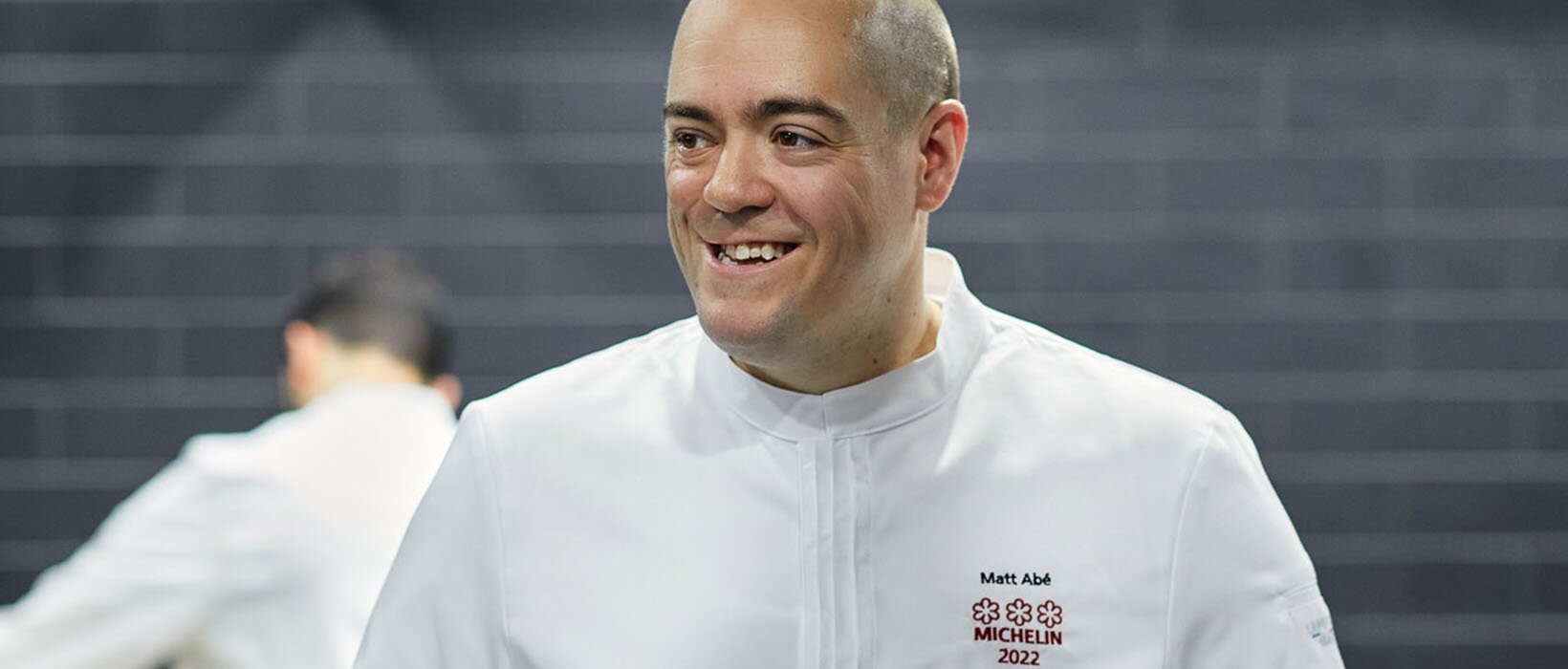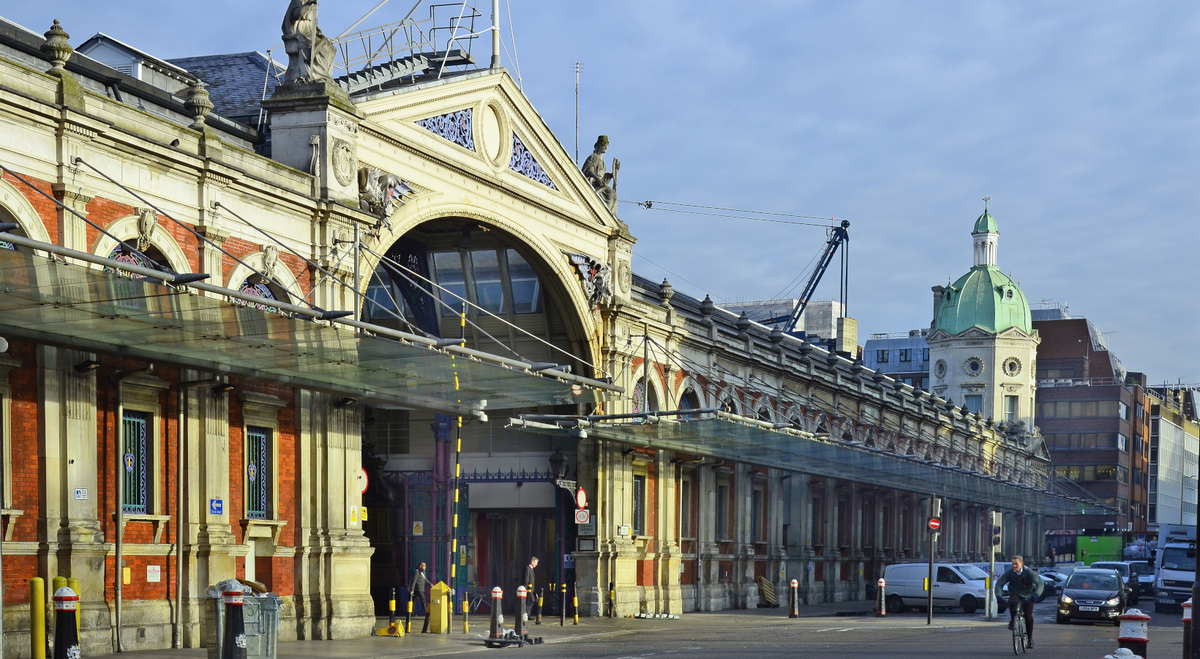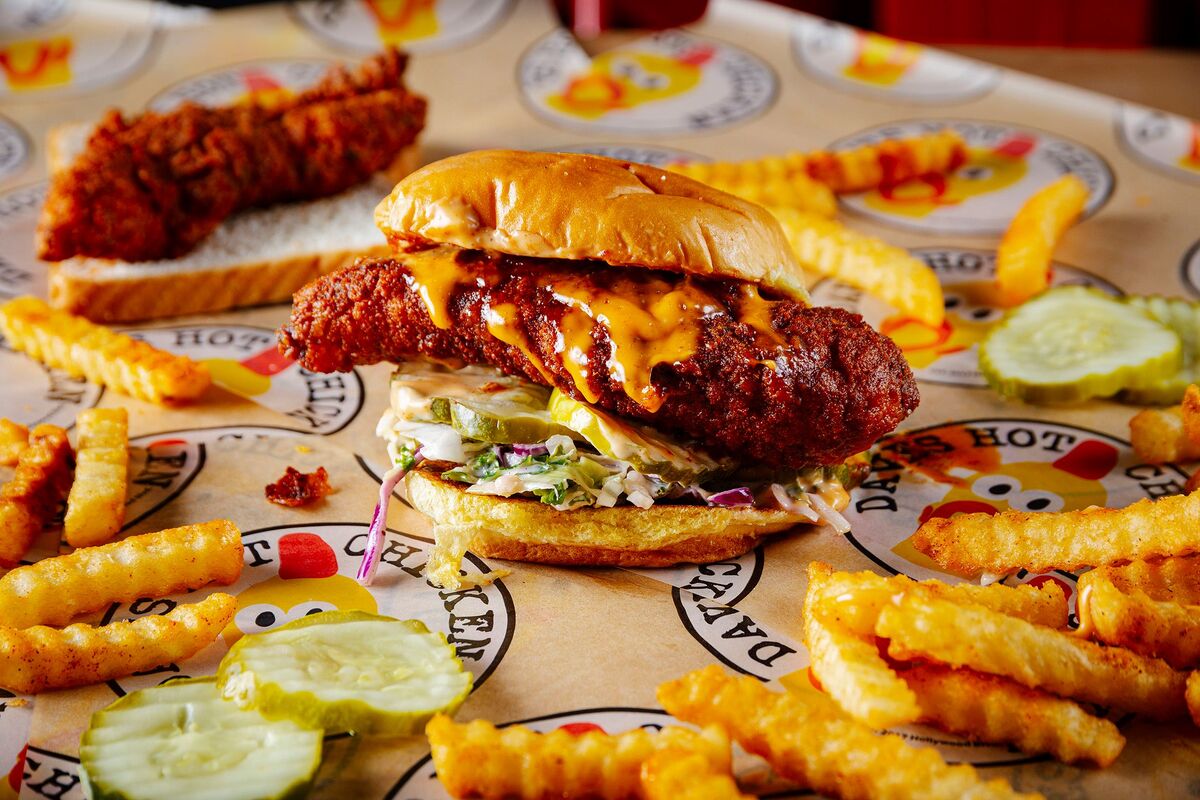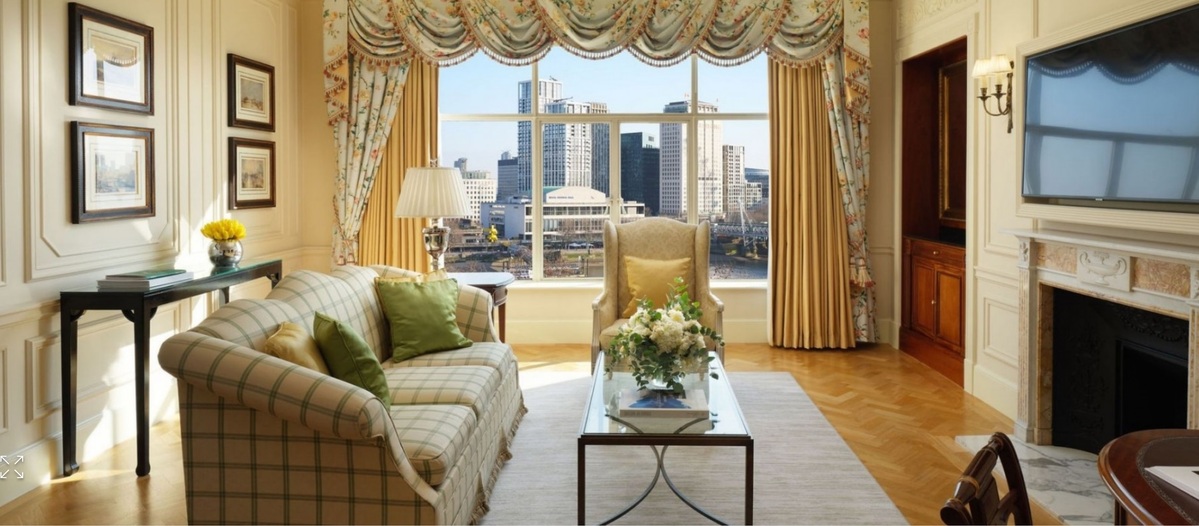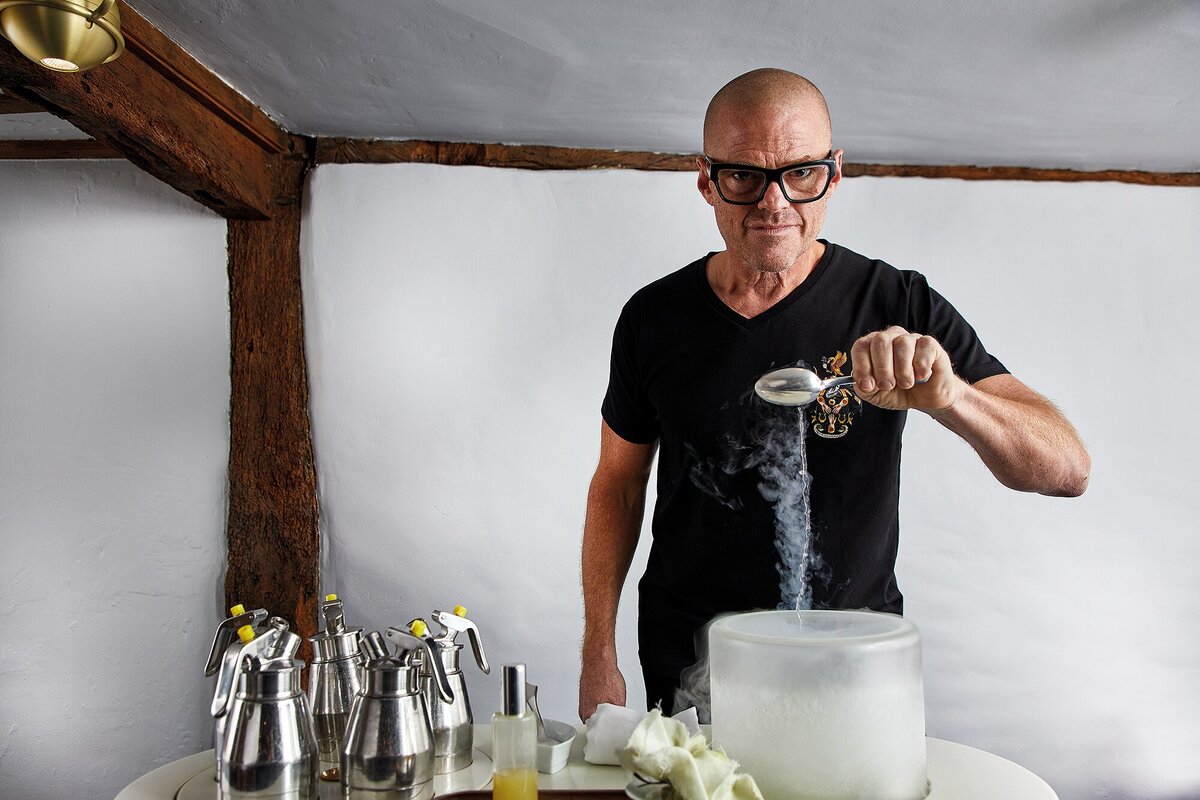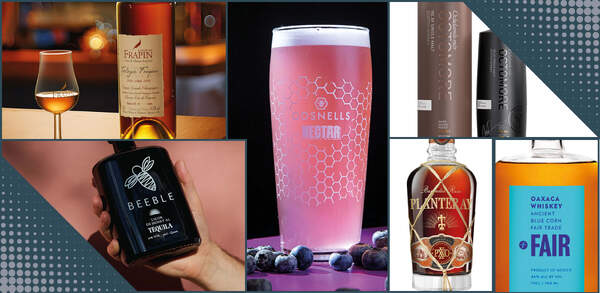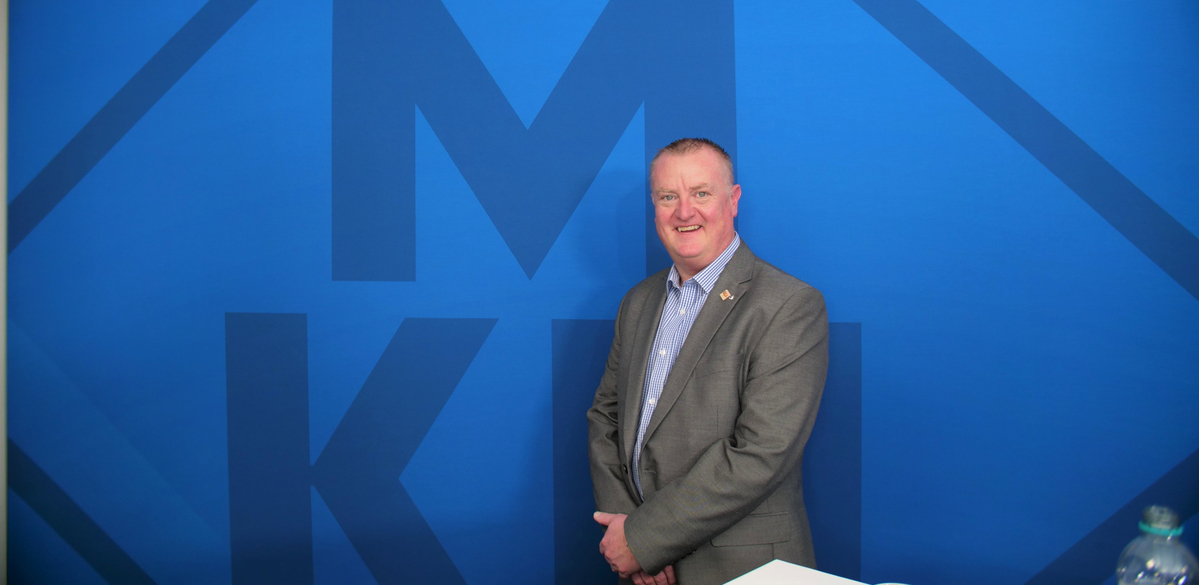Kitchen couture for chefs
The cut of the perfect white T-shirt on TV show The Bear has brought chefwear into the limelight. Will Hawkes discovers fashion-forward, quality brands
Few TV shows have commanded as many column inches over the past 12 months as The Bear, an American drama featuring an improbably good-looking chef and his stressful life running a small restaurant in Chicago.
And while much of this has to do, no doubt, with the quality of the acting and writing, there’s another element that has caused a disproportionate amount of gushing – the clothes, including a lot of kitchen workwear. “While The Bear appears to be a food show, it’s actually the next great menswear show,” wrote Cam Wolf in GQ, summing up much of the coverage.
It’s a fascinating development. Kitchen workwear has never known such positive attention. But do real-life chefs actually spend as much time worrying about how good they look as Jeremy Allen White’s character Carmy appears to do?
Kat Lane is gambling that they do. Earlier this year, she launched Chefs Wardrobe, an online chef workwear retailer aiming for the quality end of the market and listing just four brands: Chaud Devant, Lafont, Oliver Harvey and Stalwart. “Being a chef is a show now, isn’t it?” she says. “Chefs are front and centre more than ever, from Michelin level to nice gastropubs. People want to see chefs and they want to see them working. They want to know that the food is prepared properly, that it’s looked after – you can’t have a chef coming out looking like a dog’s dinner. It’s about being proud of how you look, proud of what you do.”
It’s a sentiment that may raise some eyebrows, but you can certainly see the logic. Eating out in Britain isn’t just about egg and chips or a ploughman’s lunch any more, and it hasn’t been for many years. British food has gone decisively upmarket – or at least a big chunk of it has – so why hasn’t workwear too?
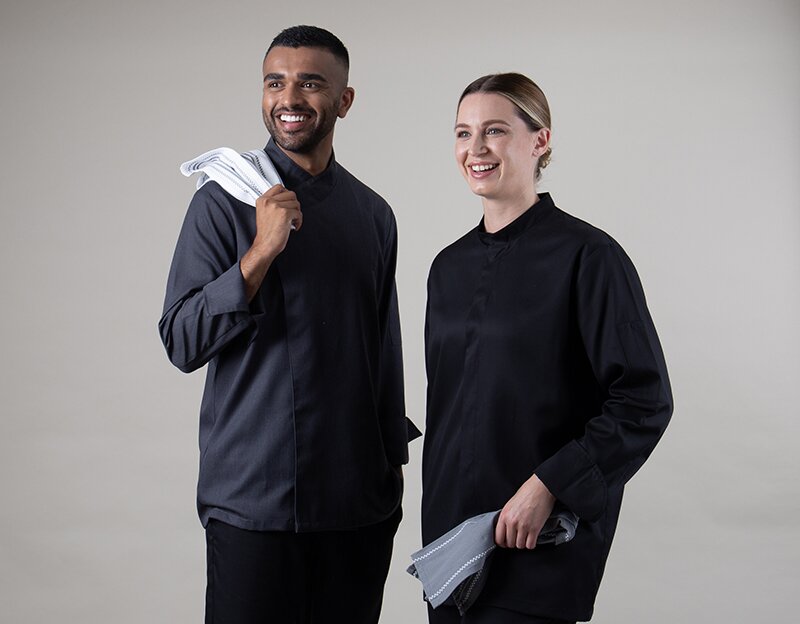
Quality cuts
Quality kitchen clothing is nothing new, of course. Angela Hartnett recently told an amusing story on Dish, the podcast she presents with comedian Nick Grimshaw, about a time when she forgot her chef’s jacket and had to borrow one from Gordon Ramsay, then her boss, despite being repeatedly warned not to by colleagues who were fearful of his reaction.
“So I just put one on – pristine, Egyptian cotton – and as soon as Gordon came in, I said, ‘Gordon, I’ve just borrowed one of your chef’s [jackets]’. And he just said, ‘No problem, darling.’ And then after, it’s the end of the day, he goes, ‘nice, innit, that?’”
Lane’s aim is to allow more chefs to enjoy this sort of quality. “I was looking at the market and there’s basic jackets – they’re fine, I’m not going to slag them off,” she says. “But I think that uniform is something that’s really important. If you’re scurrying around in basic stuff all the time, you don’t feel like a premium chef. I think people are starting to appreciate quality over quantity, as much as they are with food.” Jackets on the website start at around £25, running up to about £190. Lane, who is based in Kent, has spent more than 15 years in hospitality, with stints at Lafont, Bidfood and Neville, and she says a lot of her customers are individual chefs: “I wanted to provide a platform where people could access the brands I’m selling – the premium stuff.”
However, she’s not opposed to adding other brands. “I’m always looking at adding other brands, but they have to meet the criteria – quality, ethically. I think these are the best four. Look at Lafont – the quality is amazing. Everyone who puts on one of these jackets says, ‘Oh, they’re so nice’.”
The response has been positive, she adds. “People want more for their money, they want it to last longer. They want to look nice, they want to feel nice in it all day. In terms of what’s most popular, it’s the Lafont Basil [men’s chef jacket], the Chaud Devant Fratello [long-sleeved jacket] has done really well, and for Oliver Harvey it tends to be the Suffolk jacket.”
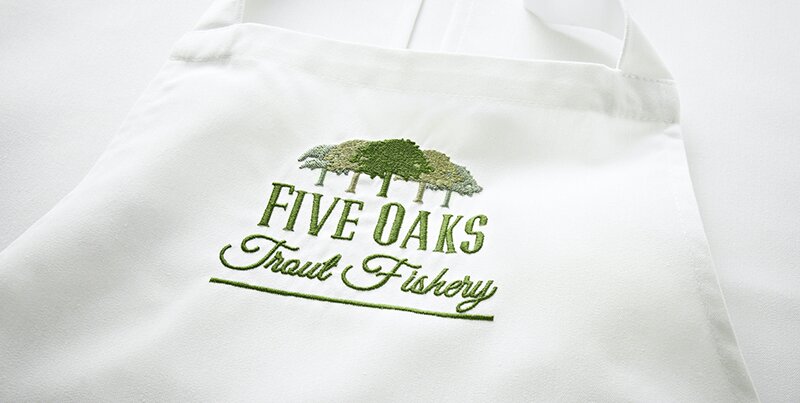
Michelin-starred jackets
Lafont arrived on the British market last year and has nine chef brand ambassadors, including Simon Rogan and Jason Atherton. It’s the largest and oldest workwear company in France, dating back to 1844, and made a huge breakthrough in 2022 when it became the exclusive Michelin chef jacket partner.
Its appeal lies in the combination of style and comfort, according to Neil Boston, group international commercial director. “While some brands focus on the classic or traditional or urban ends of the market, Lafont is focused on the lifestyle sector,” he says.
“We lean towards sportswear in both design and fabric selections, which includes lightweight, stretch, breathable fabrics, all of which are machine washable, plus a growing collection of sustainable fabrics. In the structured suiting category, the French styling comes through to differentiate the brand from some of the more boxy-shaped UK brands. All of the suiting collections are also machine washable.”
The complete collection of front and back of house uniforms can be viewed in the company’s 220-page catalogue, Boston adds. Next year, Lafont – which operates three factories, in Morocco, Tunisia and Madagascar, employing over 6,000 staff – will be launching a new collection of chef jackets, trousers and aprons, as well as additions to its front of house collection.
“Lafont’s brand positioning is based on delivering the highest quality garments, but not at the highest prices, and with an 8,000 sq ft warehouse in Warrington, garments are dispatched the same day for next-day delivery in most cases, while embroidery can be added within three to five working days,” he adds.
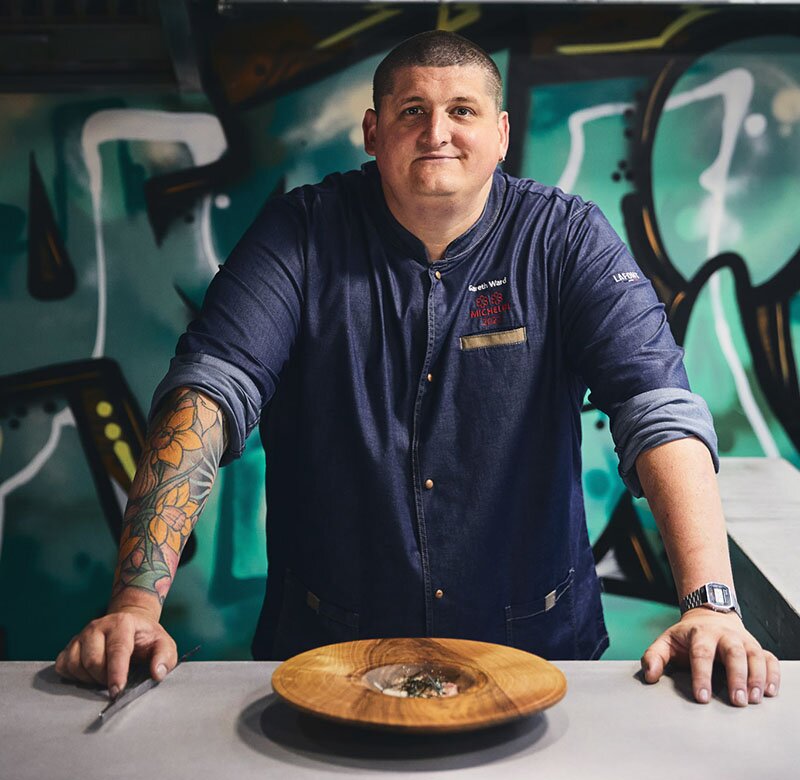
“The Lafont 1844 brand stands proud on the left sleeve of every chef jacket.”
For Raj Ruia, managing director at Richard Haworth, whose range of bed, bath and table linens is used by hotels, restaurants and events such as Gleneagles, Wimbledon and the Clove Club, personalisation is a good way to ensure staff look smart. “Front of house staff with matching aprons instantly feel ready for a busy service and are in keeping with the restaurant, especially when selecting a colour that compliments the overall design scheme,” he says.
He suggests Richard Haworth’s chef bibs, which can be embroidered with any logo, image or artwork, in almost any thread colour, with no minimal order quantity. “Chefwear becomes truly unique when embroidered with staff names or a restaurant logo,” Ruia adds. “This gives customers a fantastic impression, since your apparel is an extension of the work you do in the kitchen.”
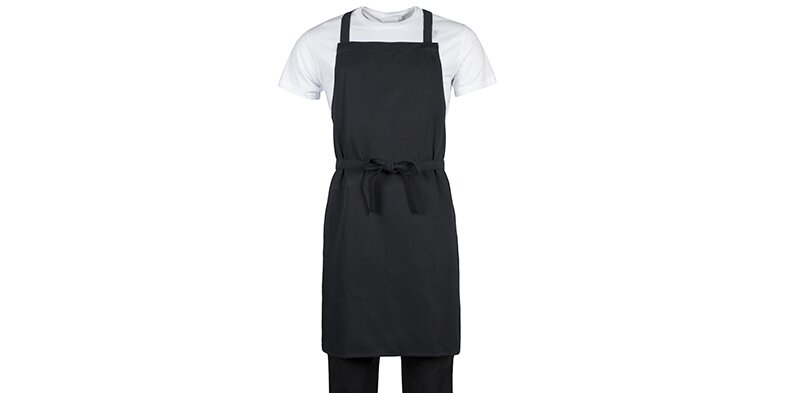
Other high-end options include Bragard (worn by chefs such as Chantelle Nicholson of Apricity and Hélène Darroze of Hélène Darroze at the Connaught), its parent company Chef Works (which opened a new showroom in Islington last year) and Alexandra, which launched its new Eco Range in July.
The Eco Range uses “intelligent fibre blends and garment technologies” to keep chefs cool; the Tencel fibres used are also carbon-neutral, according to Clare Du Mughn, design director at Alexandra: “It was important for us to create a chef wear range that is not only aesthetically pleasing, but functional and comfortable for the wearer in their working environment,” she says.
The range features slimline trousers and two chef jackets: a traditional, high-collared double-breasted jacket and a mandarin collar single-breasted jacket. They are available in three colours: black, cross-dye black and white.
The trousers are available in two colours: black and cross-dyed black, which provides customers with the option to contrast the chef’s jacket or pair the two in one colourway, creating a complete look. Both the jacket and trouser sizing is supplied in a gender-neutral fit.
“The new eco range achieves on all points,” adds Du Mughn. “It looks modern and stylish with the slim silhouette, and has ease of function but, most importantly, it’s comfortable for the wearer too, using a blend of Tencel branded Lyocell and polyester, ensuring it keeps you cool in the kitchen.”
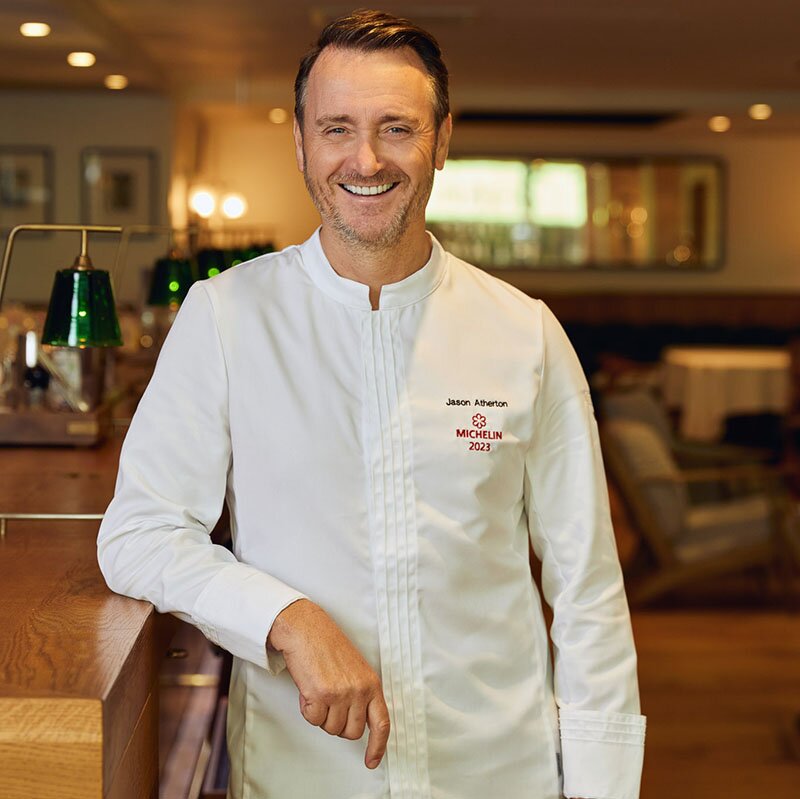
The rise of chefcore
Such has been the impact of The Bear that a new term, ‘chefcore’, has been coined to describe the gradual shift from chef’s jackets to T-shirts and aprons, like those worn in the show. Kitchen clothing is shifting, with companies like Service Works, founded in London in 2020, focusing on garments inspired by streetwear, most notably its chef pants, featuring drawstring waistbands.
Whichever way you look at it, there appears to be an increasing desire among chefs to look smart when they’re at work. That could be good news for Lane, whose immediate plan involves expanding on the customer base she’s built up since launching in January.
“It’s about building on the chefs who are coming to us and adding restaurants who want us to help them put a look together for them,” she says. “It would be great to do more business-to-business work.” And why not? In a Bear market, it pays to be bullish.
Suppliers
Alexandra
Bragard
Chaud Devant
Chefs Wardrobe
Chef Works
Lafont
Oliver Harvey
Richard Haworth
Stalwart
Service Works



